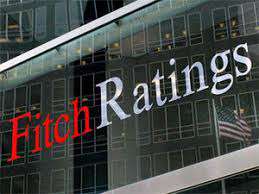New Delhi: Credit rating agency Fitch Friday has affirmed India’s Long-Term Foreign-Currency Issuer Default Rating (IDR) at ‘BBB-‘ with a stable outlook.
“India’s rating balances a strong medium-term growth outlook and favourable external balances with weak fiscal finances and some lagging structural factors, including governance standards and a still-difficult, but improving, business environment,” were the key drivers for the rating, Fitch said in a statement here.
A favourable economic growth outlook continued to support India’s credit profile, Fitch said, even though real GDP growth fell to 6.6 per cent in the fiscal year ended March 31, 2018 (FY18) according to official preliminary estimates, from 7.1 per cent in FY17.
Fitch forecasts growth to rebound to 7.3 per cent in FY19 and 7.5 per cent in FY20, as a temporary drag will fade from the withdrawal of large-denomination bank notes in November 2016 and the introduction of a Goods and Services Tax (GST) in July 2017.
“The GST is an important reform, however, and is likely to support growth in the medium term once teething issues dissipate. India’s five-year average real GDP growth of 7.1 per cent is the highest in the APAC region and among ‘BBB’ range peers. Growth has the potential to remain high for a substantial period of time, as convergence with more developed economies can be expected,” the agency said.
Per capita GDP is the lowest among ‘BBB’ range peers (3.2 per cent of the U.S. level versus the ‘BBB’ median of 17.3 per cent) and continued structural reform implementation should enhance productivity. India has the highest medium-term growth potential among the largest emerging markets, according to a recent Fitch analysis.
Fitch expects inflation to average close to 4.9 per cent in FY19, still almost double the ‘BBB’ range median of 2.5 per cent for 2018.
“We expect the RBI (Reserve Bank of India) to start raising its policy repo rate next year from 6 per cent currently as growth gains further traction. Monetary tightening could be brought forward if recent government policies push up inflation expectations, including the decision to increase minimum support prices for agricultural goods to 1.5 times the cost of production and increased customs duties on certain products, including electronics, textiles and auto parts,” the rating agency said.
It said India’s relatively strong external buffers and the comparatively closed nature of its economy make the country less vulnerable to external shocks than many of its peers.
It further said weak fiscal balances, the Achilles’ heel in India’s credit profile, continue to constrain its ratings.
Fitch said the Indian economy is less developed on a number of metrics than many of its peers. Governance continues to be weak, as illustrated by a low score for the World Bank governance indicator (46th percentile versus the ‘BBB’ median of 59th percentile). India’s ranking on the United Nations Human Development Index (31st percentile versus the ‘BBB’ median of 68th percentile) also indicates relatively low basic human development.
Talking of measures to improve India’s ratings, Fitch said the main factors that, individually or collectively, could trigger positive rating action are reduction in general government debt over the medium term to a level closer to that of rated peers and higher sustained investment and growth rates without the creation of macro imbalances, such as from successful structural reform implementation. (IANS)






































